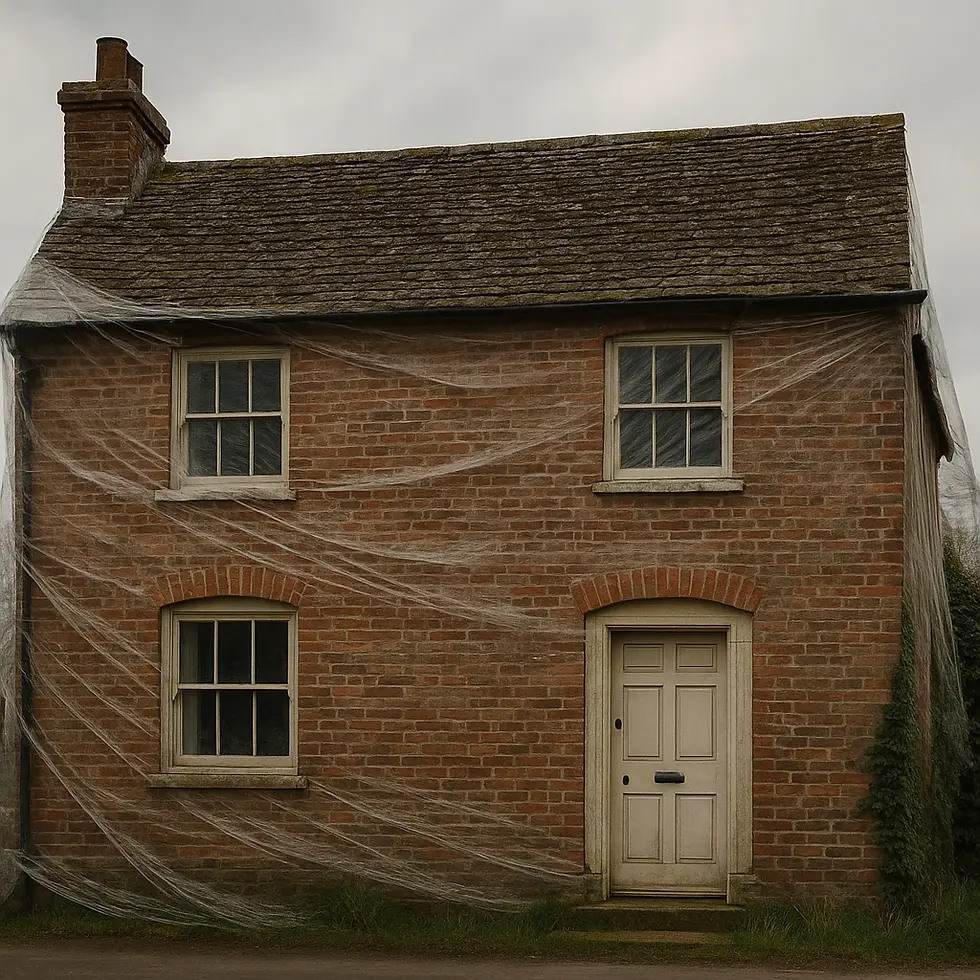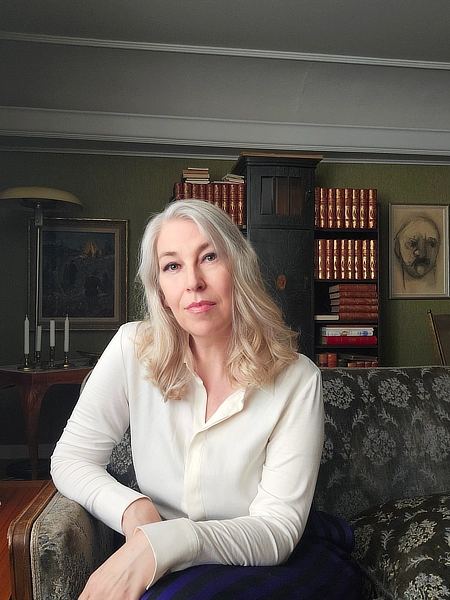THE GREEN DEATH
- Studio Wallander

- Aug 26
- 4 min read
Updated: Sep 2
DEMISE BY BEAUTY

A sickly green hue
Ever thought your walls could kill you? Perhaps that is not the instant reaction to the structure that surrounds us at home. However, if you lived in Victorian times, it could be the case. Imagine a parlour with lamp flames flickering against walls that seem to glow: so eerily bright is the green colour covering them. A child leans close, fascinated by the emerald pattern. In the mid-Victorian home, such vibrant greens were often Scheele’s green: arsenic in colour and chemical composition. The prettiest room in the house, wrapped in poison.
Whom to blame? I am afraid it was the Swedes. In 1775 the Swedish chemist Carl Wilhelm Scheele created a vivid green pigment from copper arsenite. Brighter and more stable than earlier mineral greens, it quickly spread through Europe. By the early nineteenth century, it coloured wallpapers, paints, textiles; yes, women dressed in arsenic-laced clothing. Toy makers used it, stuffing bright green into children’s playthings; confectioners dusted sweets with it to please the eye. It became hard to pass a shop window without seeing arsenic grinning back. In mid-Victorian households the hue whispered of modernity and botanical wonder, a mark of progress. Yet the arsenic it carried was deadly. True to his habit of tasting and breathing the chemicals he worked with, even Scheele himself was brought to an early death. His cause of death was uncertain.
The Wider Pattern (no pun intended)
Arsenical greens did not spread by accident. They suited a society intoxicated with industry, invention and perceived status enhancers. The Victorians embraced chemistry in the same spirit they embraced steam: both promised rapid progress, both reshaped daily life. A room lined with luminous green paper did not simply brighten a room.
It announced participation in a modern world. To entertain in such a space was to demonstrate both prosperity and scientific faith. Guests were meant to admire the glow, not question the substance. The irony is painful: hospitality itself could turn toxic.
The pigment also chimed with the age’s fascination for illusion. Mid-century Britain was a place where plaster posed as stone, softwood as oak, iron as marble. Painters became masters of wood-graining, decorators of trompe-l’œil. In such a culture, the shimmer of a colour derived from arsenic seemed less aberration than extension of the same taste for transformation. Beauty was often a trick: an excursion into magic and make-believe. The danger lay in how easily that trick could transfer into the body and cause harm. Scheele’s green trespassed into lungs, into blood. The deception was no longer confined to the stage set of the room; it performed inside the body.
The dangers became well known. Reports took on a morbid theatricality. Newspapers seized the story: parlours became poisoned rooms, and society ladies in green silk gowns were caricatured as death’s companions. Punch published ‘The Arsenic Waltz; The New Dance of Death’ in 1862 satirising arsenic fashion and wallpaper. The sensational tone reflected genuine fear. Respectable drawing rooms had turned into gothic melodramas, and the villain was colour itself.
Morris takes his time
Some European governments recognised the dangers of arsenic-pigmented paper sooner than Britain did. Sweden, for instance, banned arsenic-based green wallpapers in 1876, well ahead of Britain, who on the other hand, kept calm and carried on. Despite growing medical warning signs, it was only with the Factory and Workshop Acts 1895 that the use of arsenic became regulated in industrial settings: doctors had to report poisoning from lead, phosphorus or arsenic. There was however no direct ban on arsenic wallpaper itself. Customer demand for safer alternatives likely shifted the market more than legislation did. The market always wins. It is never a pleasant thing to understand that your child is unwell due to your penchant to keep up with the fashions of the moment.
The contrast between classes sharpened the cruelty. Middle-class households displayed their fashionable greens with pride, the danger diffused and invisible. Working-class labourers, by contrast, absorbed the poison at its source. Paper-stainers and printers stirred arsenical pigments into tubs, brushing paste onto endless sheets in rooms thick with vapour. Seamstresses handling green dresses complained of blistered hands, sore throats, dizziness, and stomach aches. The rich thus breathed diluted peril, while the poor handled the concentrated source. Arsenic became both an ornament of aspiration and an occupational sentence, as shown with the fate of Matilda Scheurer.
In 1861, the death of nineteen-year-old Matilda Scheurer, a flower-maker in London, was reported across the British press. She had spent her days dusting artificial leaves with arsenical green. When she fell ill, witnesses described her vomiting green fluid, the whites of her eyes tinged green, even her fingernails showing the stain of her trade. She died in agony, and her story was retold as a warning of beauty turned lethal. The reports horrified readers because they touched both the domestic and the fashionable: the artificial flowers she handled were destined for ball gowns and drawing rooms, the very symbols of refinement. Scheurer’s suffering laid bare the human cost behind the sparkle of the season’s colour.
In Britain, even luminaries like William Morris, founder of the Arts & Crafts movement, continued to use arsenic pigments well into the 1870s. He only voluntarily removed arsenic from his wallpaper when responding more to public pressure than scientific warning. The cynics among us might think that his mother’s family’s interest in an arsenic mine in Devon might also have had something to do with it. Perhaps too his successful beautiful patterns, especially the leafy greens that wound through his botanical prints, created a resistance to the fact that something so beautiful could be so treacherous.
And today?
The story of arsenical wallpaper and paints reminds us that interiors are not neutral. They shape perceived societal status, health as much as mood, bearing risks as well as delights. The Victorians did not choose poison knowingly to start; they chose fashion, modernity, a sense of belonging to an age of science. Their homes became theatres where progress was staged, even when the backdrop was deadly.
Every age has its hidden hazards. The Victorians had arsenic, gaslight, smoke. We now live among chemicals whose reputations are not yet written. Formaldehyde in flat-pack furniture, microplastics in household dust, flame retardants in upholstery: each has carried its promise and will carry its fallout. The parlour may glitter in the light of progress, but beware what lies beneath the surface.




